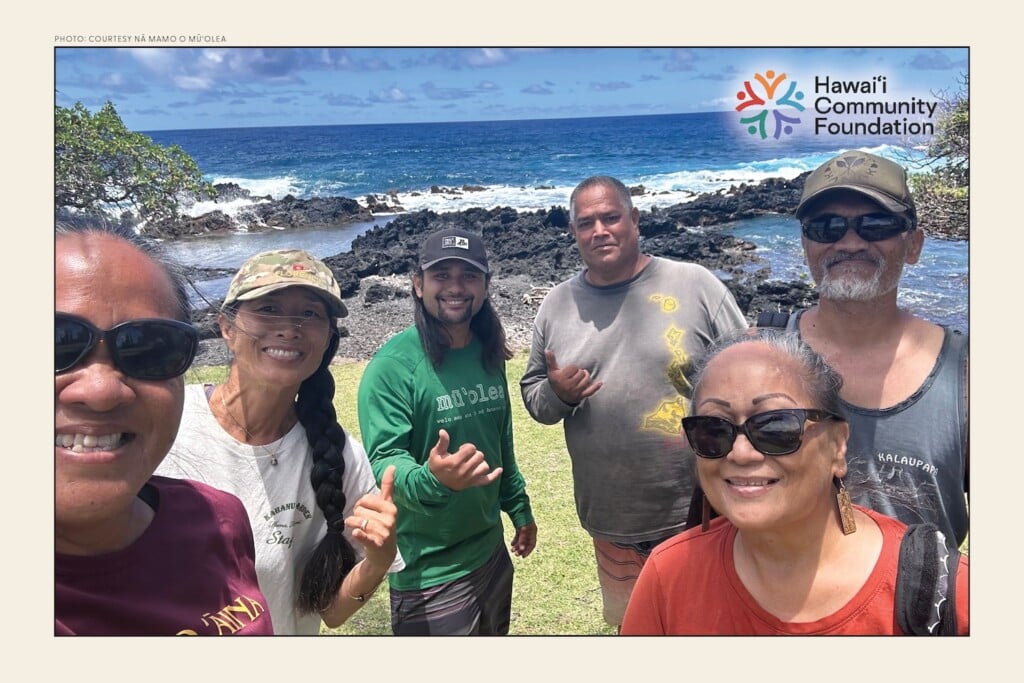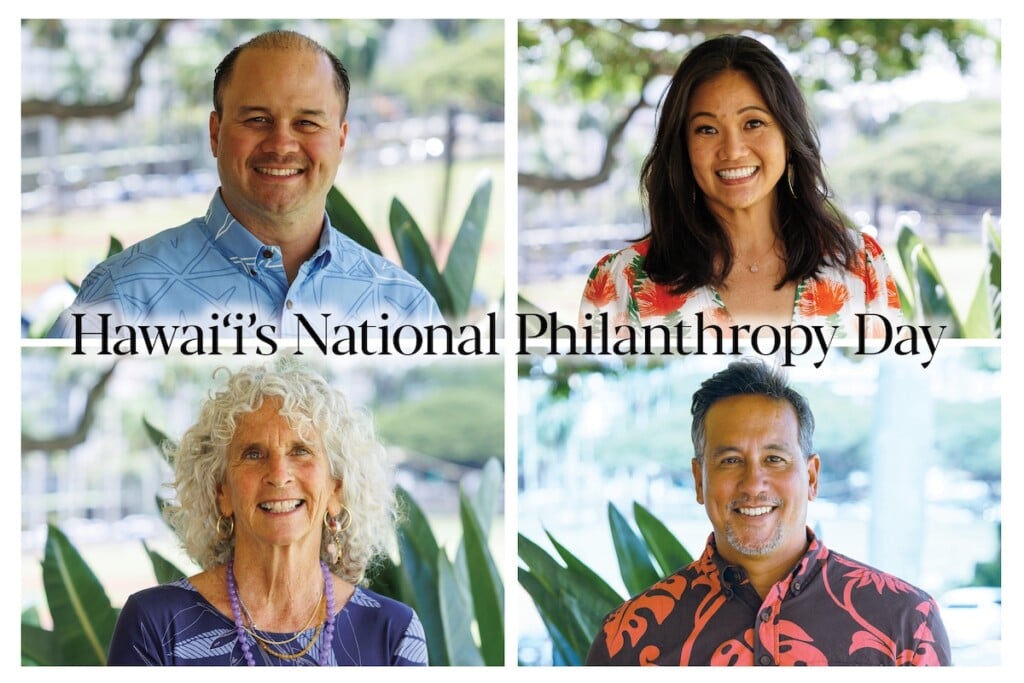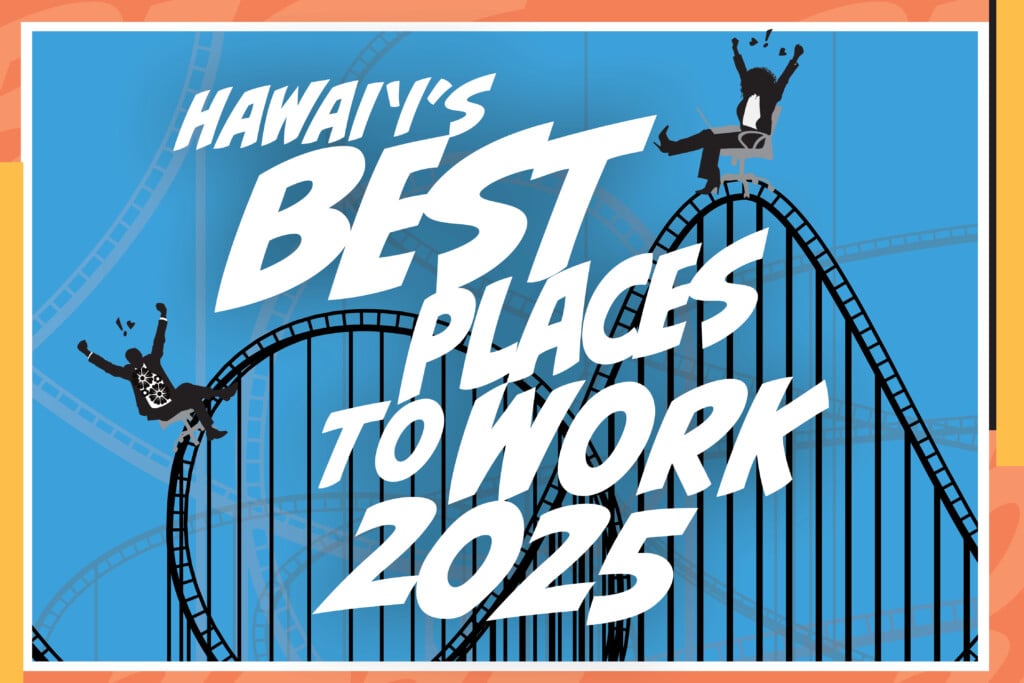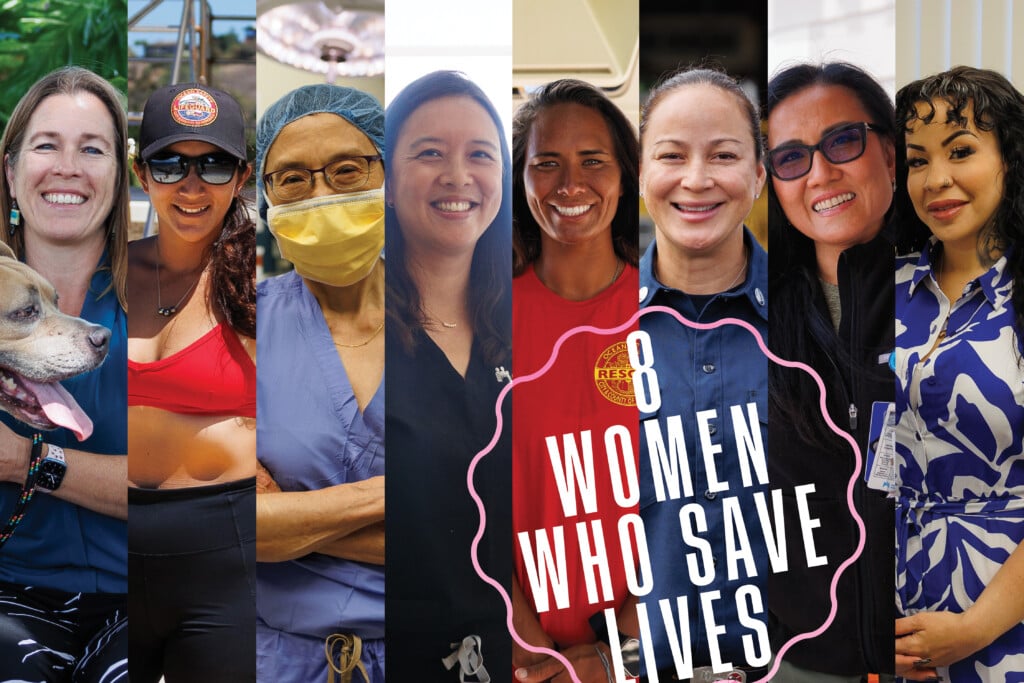How an East Maui coastline got its ‘opihi back
Taking care of the fishing waters between Kaupo and Ke‘anae is a community affair.

For Claudia Kalaola and the other keiki who grew up along Maui’s eastern shore in the 1960s, the reef and shoreline at Mu‘olea Point represented more than just a place to play. “At five years old, we knew how to fish. We ate limu (seaweed) and ‘opihi (limpets) and whatever we caught. This was literally our icebox,” says Kalaola.
Knowledgeable kanaka maoli helped maintain Mu‘olea for centuries, helping to ensure an abundance of marine life for families living near the coast. However, in recent decades, this cultural gathering place began to show signs of depletion; overfishing had decimated stocks of ‘opihi, kole, ‘u‘u, and other crucial species.
In 2004, area residents had the opportunity to purchase nearly 70 acres of coastal land around Mu‘olea, and created a nonprofit, Na Mamo o Mu‘olea, to better manage and protect the area’s natural resources. “In ancient times, the konohiki [land division head] would manage an area and make sure there were resources for everyone,” says Kalaola, who is Na Mamo’s director. “Today, the community has to collectively act as konohiki and ask: What kind of wind and rain are we having? What plants are growing and are the birds coming back?”
Na Mamo volunteers created the state’s first ‘opihi rest area, asking residents to limit their picking of the popular limpets for a three-year period. As a result, the area’s ‘opihi population rebounded. Today, this rest area has become a model for conservation in East Maui, which is now home to at least nine ‘opihi rest areas.
In fact, Kalaola’s work has expanded from Mu‘olea to communities spanning from Kaupo to Ke‘anae, which are now collaborating to establish their own regional Community Based Subsistence Fishing Area, Maui Hikina Huliamahi, covering 60 miles of coastline with proposed codes of conduct for species harvest based on Native Hawaiian cultural principles. Once created, this protected zone would be the largest of its kind in Hawai‘i.
“All of our East Maui communities have really started to bond together in the work,” Kalaola says. “You start talking and everyone has similar stories of how their kupuna took them out fishing and taught them always to kilo (look) and observe before taking. By combining knowledge and working together, we’re stronger.”
Supporting this vital coastal restoration work, the Hawai‘i Community Foundation (HCF) has been a strategic partner, providing funding and organizational strengthening to Na Mamo and a cohort of other grassroots groups facing similar challenges across Maui’s nearshore communities. Through its Holomua Marine Initiative Fund, Laulima Grants, and Makai Watch programs, HCF has helped build a network where traditional knowledge and community wisdom drive conservation efforts.
“By supporting community organizations like Na Mamo, HCF hopes the uniqueness and abundance of Hawai‘i’s nearshore marine environments will be restored and protected for generations,” says Dana Okano, HCF’s Natural Environment program director. “The expertise and lived experience of these communities is really the best source for finding effective, appropriate solutions to the conservation challenges faced all across the Islands.”
To learn more about the work HCF is supporting through the Change Framework, visit hawaiicommunityfoundation.org/change.







